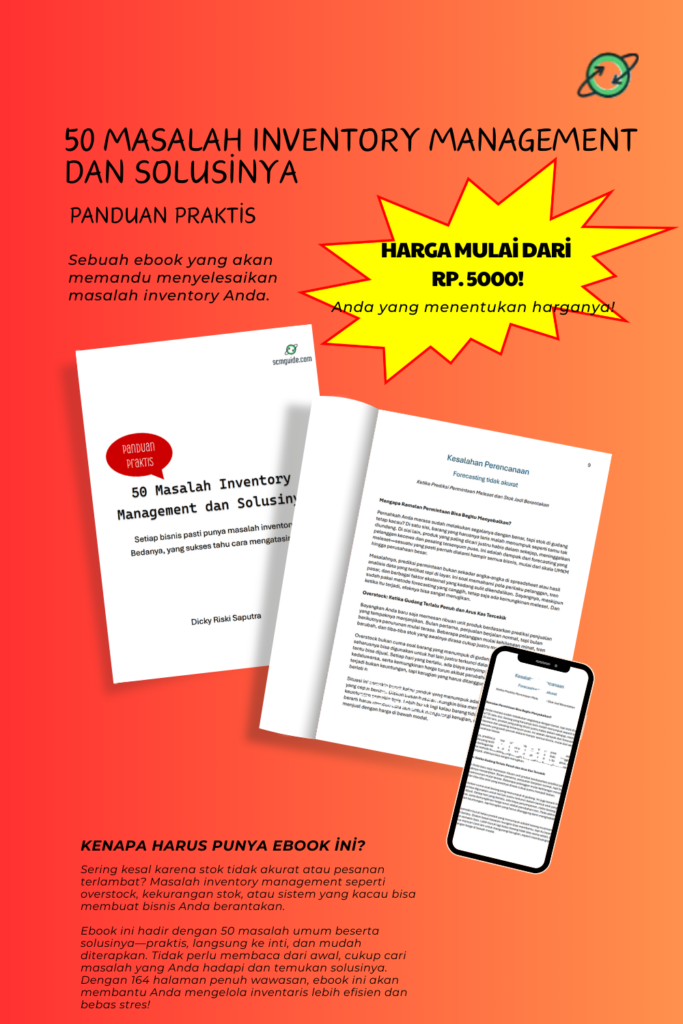Imagine the human body without a functioning circulatory system. It would struggle to deliver oxygen and nutrients, leaving organs to falter. Similarly, businesses cannot thrive without an efficient system to manage the flow of goods, information, and finances. That system is Supply Chain Management (SCM).
SCM is more than just logistics or inventory management—it is the backbone of modern business operations. In an increasingly competitive global market, investing in SCM is no longer an option but a necessity for companies aiming to survive and grow. It powers efficiency, enhances customer satisfaction, and fuels profitability.
But what does investing in SCM truly entail, and why is it so critical?
Let’s dive into the mechanics, benefits, and pitfalls of SCM to uncover its profound impact on business success.
Before we go further into this topic, don’t forget to follow my LinkedIn account. You’ll get more helpful insights on supply chain management there.
Table of Contents
Understanding Supply Chain Management: More Than Just Logistics
At its core, SCM is the coordination and integration of all activities involved in producing and delivering a product or service—from sourcing raw materials to delivering the final product to customers. However, SCM goes far beyond the mere movement of products from one point to another. It involves intricate planning to anticipate demand and ensure adequate resources. It includes sourcing strategies that prioritize building strong supplier relationships and negotiating favorable contracts.
Manufacturing processes are carefully overseen to maintain production schedules and ensure quality control. Delivery logistics are optimized for timeliness and cost-effectiveness, while returns processes are designed to handle customer feedback and minimize waste.
Each component of SCM requires seamless communication and collaboration among stakeholders. When these elements work together cohesively, businesses can achieve operational excellence. The efficiency and reliability of a supply chain determine whether a company can consistently meet customer demands and adapt to unforeseen challenges.
Why SCM Matters: The Key to Competitive Advantage
Investing in SCM offers unparalleled benefits that directly influence a company’s bottom line. One of the most significant advantages is the boost in efficiency and productivity it provides.
An efficient supply chain minimizes delays, eliminates redundancies, and optimizes resource allocation. Companies leveraging real-time data can forecast demand with greater accuracy, preventing issues such as overstocking or stockouts. This kind of foresight allows operations to flow smoothly and reduces waste.

Another compelling reason to prioritize SCM is cost reduction. By streamlining processes, companies can identify areas for savings, such as negotiating better terms with suppliers, optimizing transportation routes, or automating repetitive tasks. These savings contribute directly to improved profit margins.
Beyond cost considerations, effective SCM enhances the quality of products and services. A well-managed supply chain ensures consistency in production standards, which translates to better customer experiences and increased brand loyalty.
SCM also enables businesses to adapt to changing market conditions. In a dynamic environment where consumer preferences and global events can shift rapidly, agility is crucial. A strong supply chain empowers companies to respond quickly to these changes, seizing opportunities and mitigating risks.
Furthermore, robust SCM fosters stronger relationships with stakeholders, including suppliers, manufacturers, distributors, and customers. Transparent communication and collaboration build trust and lead to long-term partnerships that benefit everyone involved.
You might also like:
- Survival Over Profit: How Businesses Can Endure Global Conflict and Supply Chain Chaos
- Think You Can Predict Demand? Here’s Why You’ll Never Be 100% Right (and That’s Okay)
Consequences of Neglecting SCM
Failing to invest in SCM can have dire consequences for a business. Inefficiencies and increased costs are often the first signs of trouble.
Without a well-structured supply chain, delays become frequent, inventory management suffers, and operational costs spiral out of control.
Poor SCM also impacts product quality. Inconsistent processes and strained supplier relationships result in subpar products, which can tarnish a company’s reputation and erode customer trust.
Customer dissatisfaction is another inevitable outcome. Late deliveries, incorrect orders, or poor communication leave customers frustrated. In today’s market, where reviews and recommendations can make or break a brand, negative experiences have far-reaching consequences.
Additionally, companies that neglect SCM often struggle to compete. Competitors with superior supply chains offer better prices, faster delivery, and higher-quality products, leaving poorly managed businesses at a significant disadvantage.

Supply chain disruptions present yet another challenge. Events like natural disasters, pandemics, or geopolitical tensions can wreak havoc on unprepared companies.
Businesses without resilient SCM systems find themselves scrambling to recover, while their competitors with robust contingency plans continue to thrive. These disruptions highlight the importance of risk management and adaptability in supply chain operations.
Factors to Consider When Investing in SCM
No two businesses are alike, and the same goes for their supply chains. Before investing in SCM, companies must evaluate their unique circumstances. The size and scale of a business play a crucial role in determining its SCM needs.
Small and medium-sized enterprises (SMEs) face different challenges compared to large multinational corporations, so their investment strategies should reflect those differences.
Industry dynamics also influence SCM priorities. For example, a fashion retailer may focus on speed to market to capitalize on fleeting trends, while a pharmaceutical company might prioritize compliance with strict regulatory standards.
Strategic goals further shape SCM investments. Whether the objective is to reduce costs, expand into new markets, or achieve sustainability targets, the supply chain strategy must align with these overarching goals.
Technology integration is another critical consideration. Advanced tools such as artificial intelligence, blockchain, and the Internet of Things (IoT) can revolutionize SCM, but companies must ensure they have the infrastructure and expertise to leverage these technologies effectively.
Finally, risk management is essential for building a resilient supply chain. Companies should identify potential vulnerabilities and develop contingency plans, such as diversifying suppliers or establishing backup logistics options.
The Role of Technology in SCM
Technology is transforming SCM by offering unprecedented levels of visibility, automation, and analytics. Artificial intelligence is one of the most powerful tools in this space. AI can analyze vast amounts of data to predict demand, identify inefficiencies, and optimize operations. For instance, AI algorithms can forecast sales trends based on historical data and current market conditions, enabling businesses to plan more effectively.

Blockchain technology is another game-changer. By creating a transparent and tamper-proof ledger, blockchain enhances trust and traceability in supply chains. This is particularly valuable in industries like food and pharmaceuticals, where tracking the origin and journey of products is critical for safety and compliance.
The Internet of Things has also revolutionized supply chain visibility. IoT devices, such as sensors and GPS trackers, provide real-time updates on the location and condition of goods. This information helps businesses monitor inventory levels, reduce losses, and ensure timely deliveries.
Robotics and automation further streamline supply chain processes by taking over repetitive tasks, such as picking and packing, which reduces errors and speeds up operations.
Big data analytics ties all these technologies together by offering actionable insights. By analyzing both historical and real-time data, companies can make informed decisions that drive efficiency and innovation.
Whether it’s optimizing warehouse layouts, planning transportation routes, or predicting future demand, big data empowers businesses to stay ahead of the curve.
You might also like:
- Maximizing Negotiation Opportunities in Supply Chain: You Don’t Have to Say Yes to Everything
- Managing Deflation’s Impact on the Supply Chain: Challenges and Solutions
Case Studies: SCM in Action
Real-world examples illustrate the transformative power of SCM. Zara, the global fashion retailer, is a prime example of speed and agility in supply chain management. By producing small batches of clothing and closely monitoring customer preferences, Zara minimizes excess inventory and ensures its collections remain relevant. This agile approach allows the company to respond quickly to changing trends and maintain its competitive edge.
Amazon’s supply chain is another success story. Known for its customer-centric logistics, Amazon has built an extensive network of fulfillment centers, advanced robotics, and real-time tracking capabilities. These innovations enable the company to deliver products faster and more efficiently than its competitors, solidifying its position as the leader in e-commerce.
Toyota demonstrates the power of lean manufacturing through its just-in-time (JIT) approach. By producing only what is needed, when it is needed, Toyota minimizes waste and maximizes efficiency. This strategy has not only reduced costs but also established Toyota as one of the most profitable automakers in the world. These case studies highlight the diverse ways companies can leverage SCM to achieve remarkable results.
Conclusion: A Long-Term Investment for Sustainable Growth
Supply Chain Management is not a one-time project but a continuous investment that pays dividends over time. Companies that prioritize SCM can achieve operational excellence, adapt to changing markets, and gain a competitive edge. For businesses, the question is not whether to invest in SCM but how to do so effectively.
By understanding their unique needs, leveraging the right technologies, and fostering collaboration, companies can build supply chains that are resilient, efficient, and sustainable. In today’s fast-paced business landscape, SCM is the lifeline that keeps organizations thriving. So, is your business ready to invest in its backbone and secure its future?
I hope you find it helpful!
Please share this article with your colleagues so they can also benefit. For more insights on supply chain management, follow my LinkedIn account. You’re free to use all articles on this blog for any purpose, even for commercial use, without needing to give credit.

 by
by 



